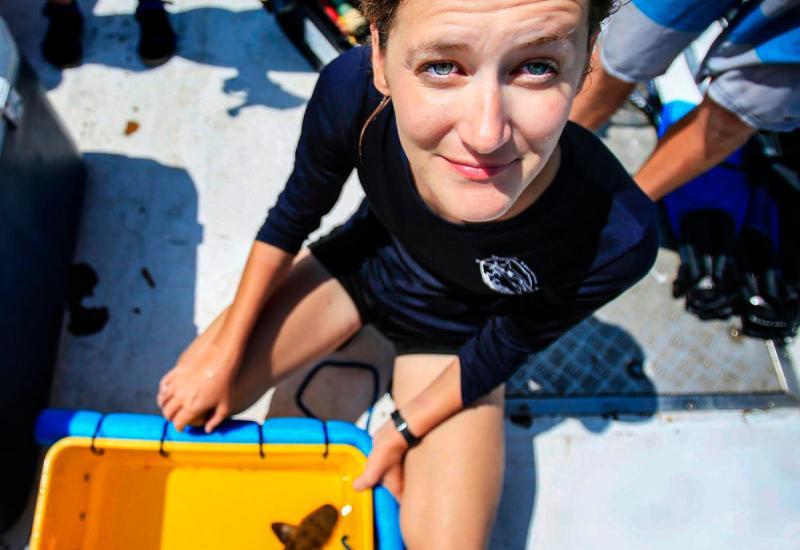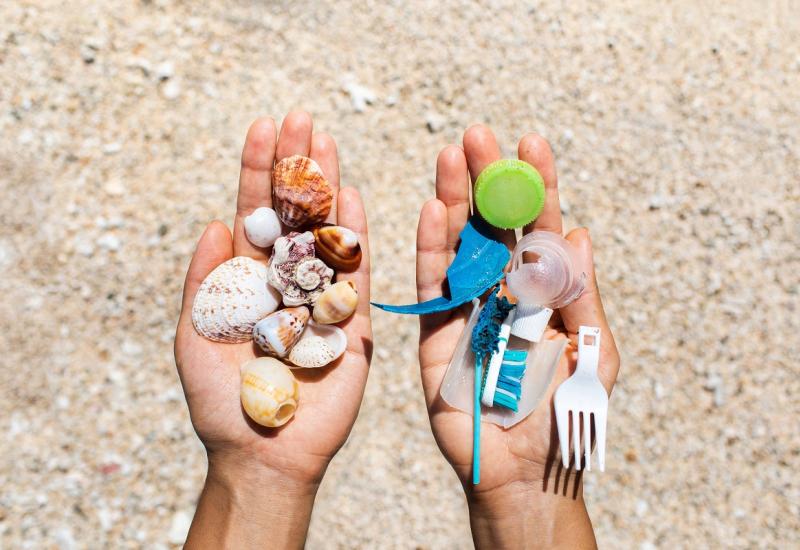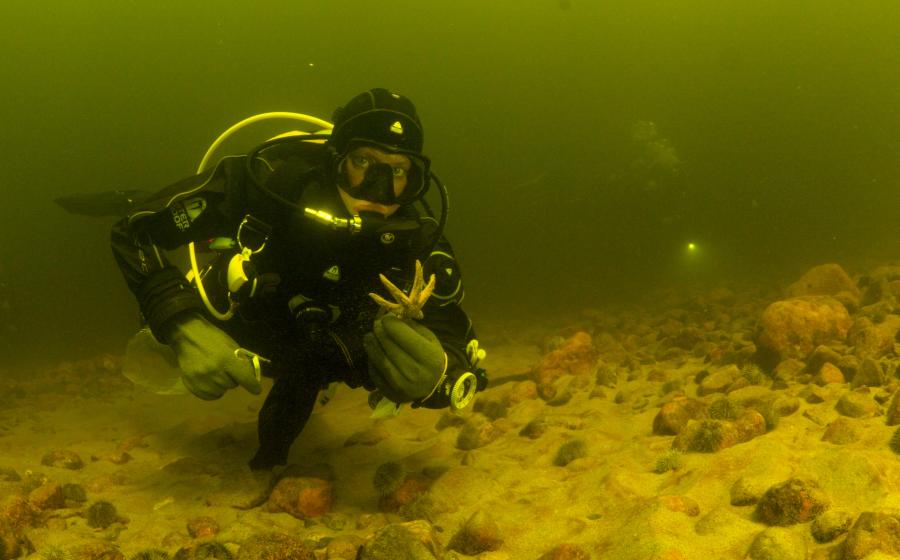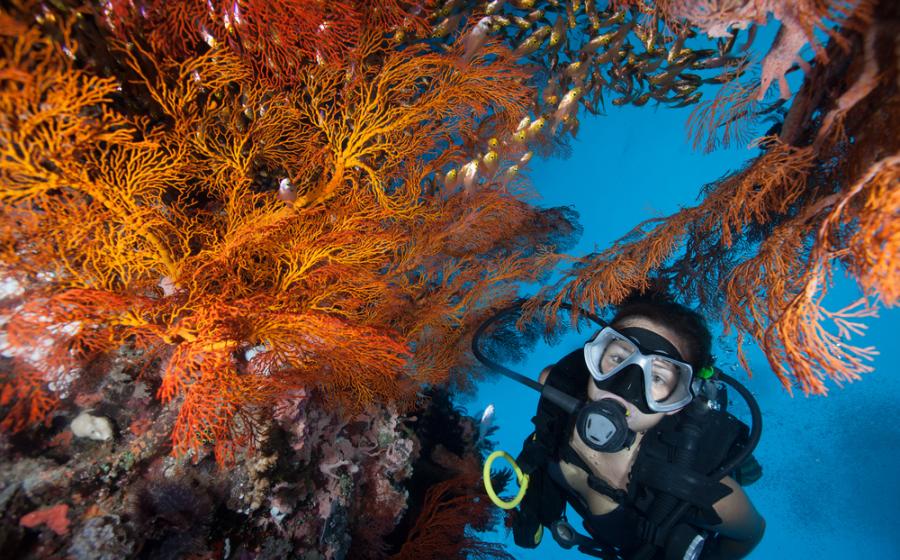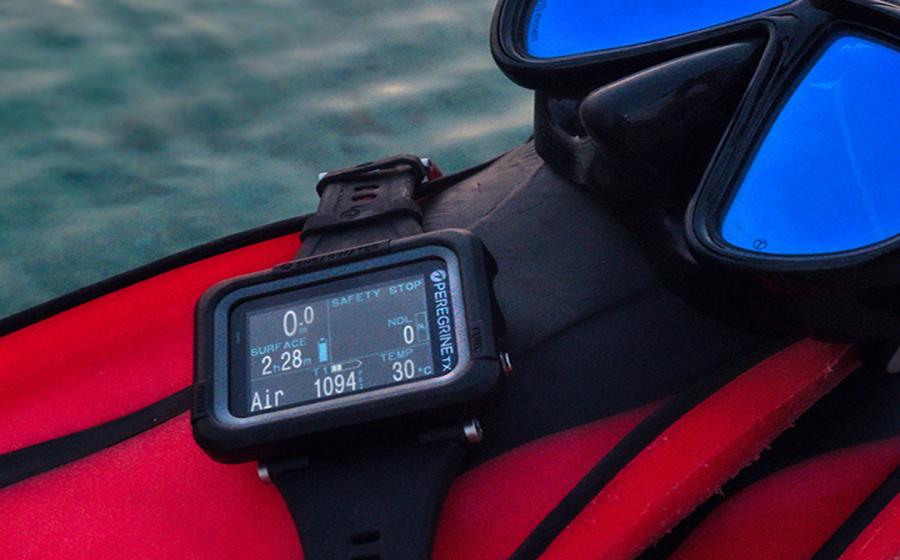You Can Help Us “Triumph Over Trash”
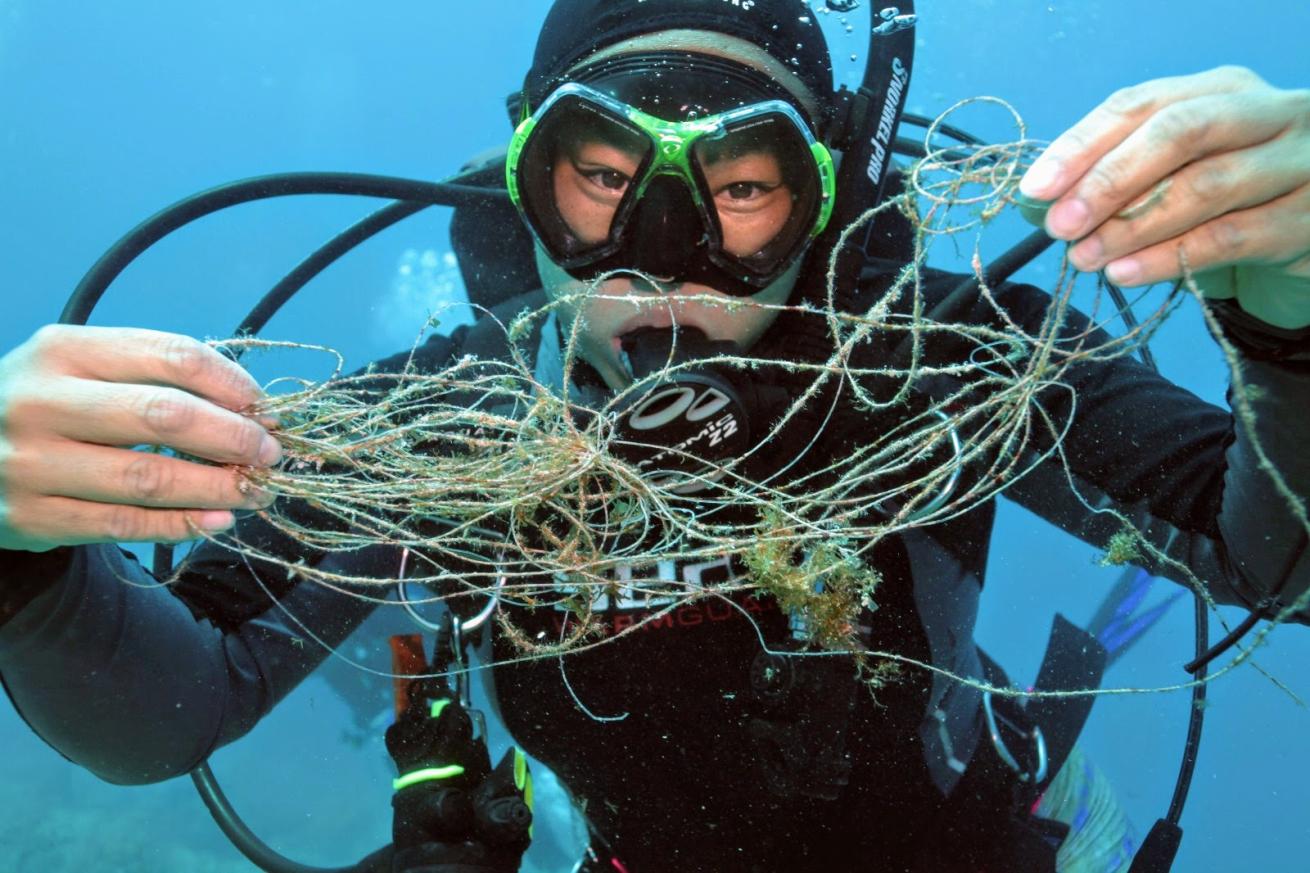
Sara Nilsson/Ocean RebelsAuthor Tiffany Duong holds up monofilament, which appears invisible but wreaks havoc on fragile corals and wildlife by entangling them.
Plastic pollution and marine debris are global-scale problems for our coastlines and ocean. Trash in and near waterways kills wildlife, destroys ecosystems, threatens tourism-based economies and poses health risks at all levels of the food chain – up to and including humans. Luckily, we’re creating more ways to fight back and protect our ocean.
Some Truths About Trash
You might be asking, how does trash get into the ocean?
According to PADI AWARE research, 80% of the trash in our ocean comes from land-based sources. This includes debris that washes down drains and rivers. Poorly-managed landfills, dumps and industrial waste centers are also a source.
Much of this is plastic pollution made up of single-use plastics that will never biodegrade or break down.
Chemicals and other runoff pollutants also enter our waterways, usually after big storms or other weather events, as water flows across the land towards streams that lead to the ocean. According to the United States Geological Survey, stormwater pollutants can include sediment, agricultural nutrients such as phosphorus and nitrogen, bacteria from animal and human waste, lawn and gardening pesticides, metals from rooftops and roadways and more. In the ocean, runoff can lead to harmful events like toxic algal blooms, oceanic dead zones and fish kills.
“We need to be more aware of our impact on the environment,” Charles Rolsky, Director of Science for Plastic Oceans International, told EcoWatch. “Seemingly small concepts like flushing plastic down the drain can have major consequences for the planet. Wastewater treatment plants, for example, are now considered major sources of microplastic pollution, which is a direct result of humans flushing plastic trash down the drain. More attention must be paid to our impact on the planet.”
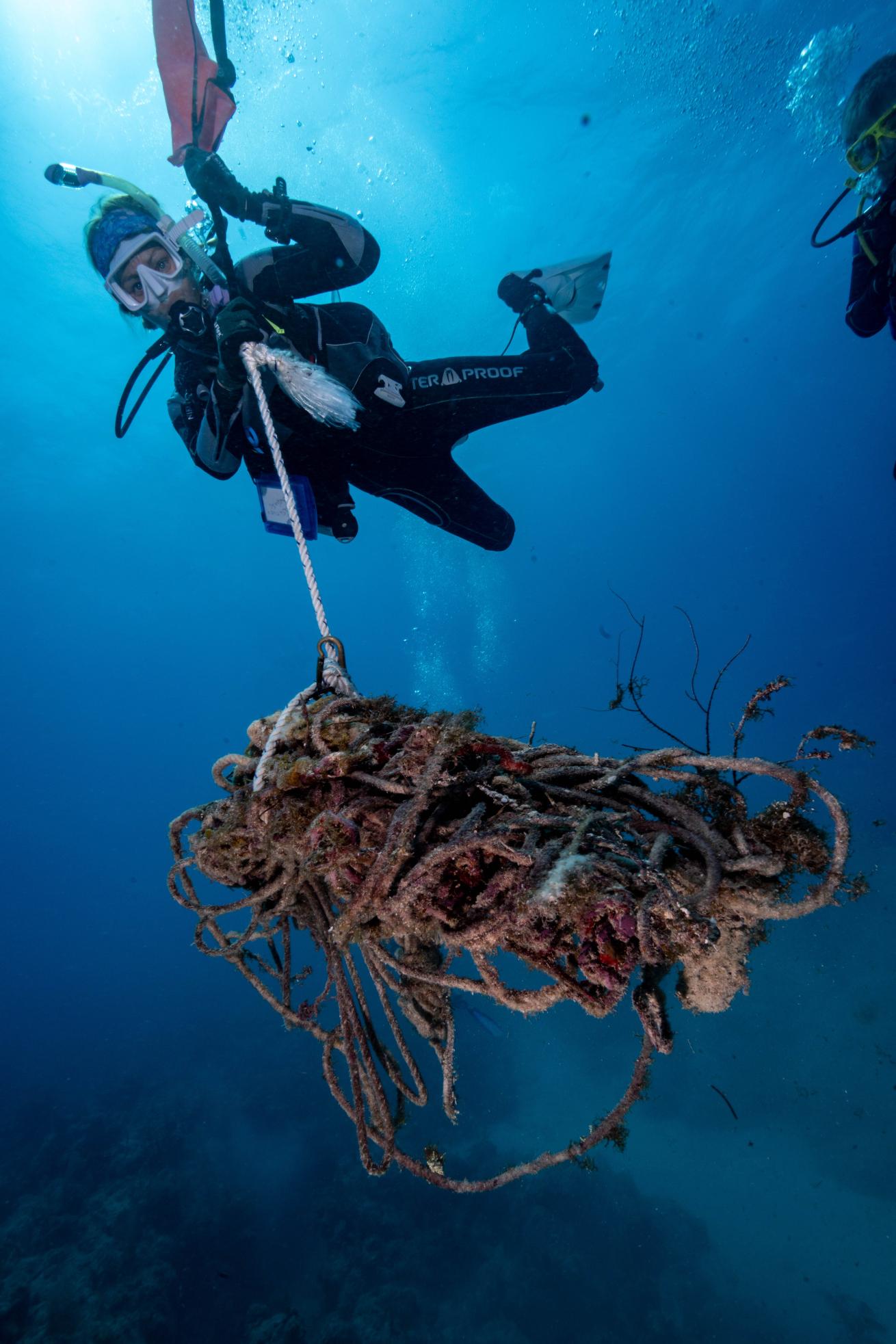
Kurt TiddKey Dives Instructor Nikki Sunshine uses a lift bag to haul up old line from the seafloor.
Too Much Trash
Trash and pollution can smother and overwhelm fragile aquatic ecosystems like coral reefs, seagrass beds and mangrove root nurseries.
Floating trash and ghost nets in the ocean can entangle and drown whales, sea turtles, sea lions, seabirds and other sea creatures that breathe air at the surface. Random ropes, lines and fishing monofilament also easily get wrapped around flippers and tail flukes, sometimes cutting off blood flow until appendages are effectively amputated.
Moreover, many animals ingest trash and plastics, causing great harm. For instance, sea turtles are known to mistake floating plastic bags for their favorite meal – jellyfish. Filter feeders like baleen whales and manta rays ingest trash floating in the water near their prey. In animal digestive systems, plastic doesn’t digest and can block biological processes, leading to death.
Related Reading: 50 Years of Garbage and We Still Don’t Know What to Do
Finally, as many plastics enter marine environments, the elements break them into smaller and smaller pieces. As micro and nano plastics, they’re ingested by plankton, krill and other base-level organisms in the food web. As bigger animals ingest these, the plastics – and toxins they leach – bioaccumulate and become more potent. This is partially why doctors advise against eating too many large pelagic fish like tuna, which have harmful levels of mercury and other toxins.
Bad for the Environment, Bad for the Economy
Marine debris and coastal trash also harm local economies that rely heavily on tourism for survival. According to NOAA, “Marine debris can decrease the number of days visitors spend on beaches, resulting in fewer tourism dollars spent and thus decreasing local jobs.”
In a NOAA-funded study, doubling the amount of marine debris on beaches in coastal Alabama resulted in an estimated decrease of 1 million visitor days, which translated to an economic loss of $113 million tourism dollars and a decrease of nearly 2,200 jobs.
Critically, the same study found that decreasing marine debris on shorelines can increase tourism-related spending and jobs. For example, in Ohio, reducing marine debris to almost zero was estimated to produce an additional $217 million tourism dollars and over 3,700 jobs.
What We Can Do: Prevent Pollution and Reduce Rubbish
To combat marine debris, we should stem pollution at its source. Therefore, PADI has partnered with The Ocean Cleanup to prevent trash from entering waterways in the first place. The Ocean Cleanup installs Interceptors to catch floating plastic at the mouths of rivers. The initiative aims to stop 80% of riverine plastic pollution from ever reaching the ocean.
Related Reading: How to Safely Collect Marine Debris
The bigger picture, however, is reducing the overall amount of trash we create.
As for trash that’s already there, we should continue land-based cleanups and Dives Against Debris. We can also support organizations doing this work – at the individual, community and global level.
Let’s ‘Triumph Over Trash’
Some dedicated individuals are taking cleanup efforts to a new level. For example, I.CARE’s inaugural Trash Derby brought together tourists, locals, nonprofits and dive shops for a common goal: the largest-ever debris clean-up event in the Florida Keys.
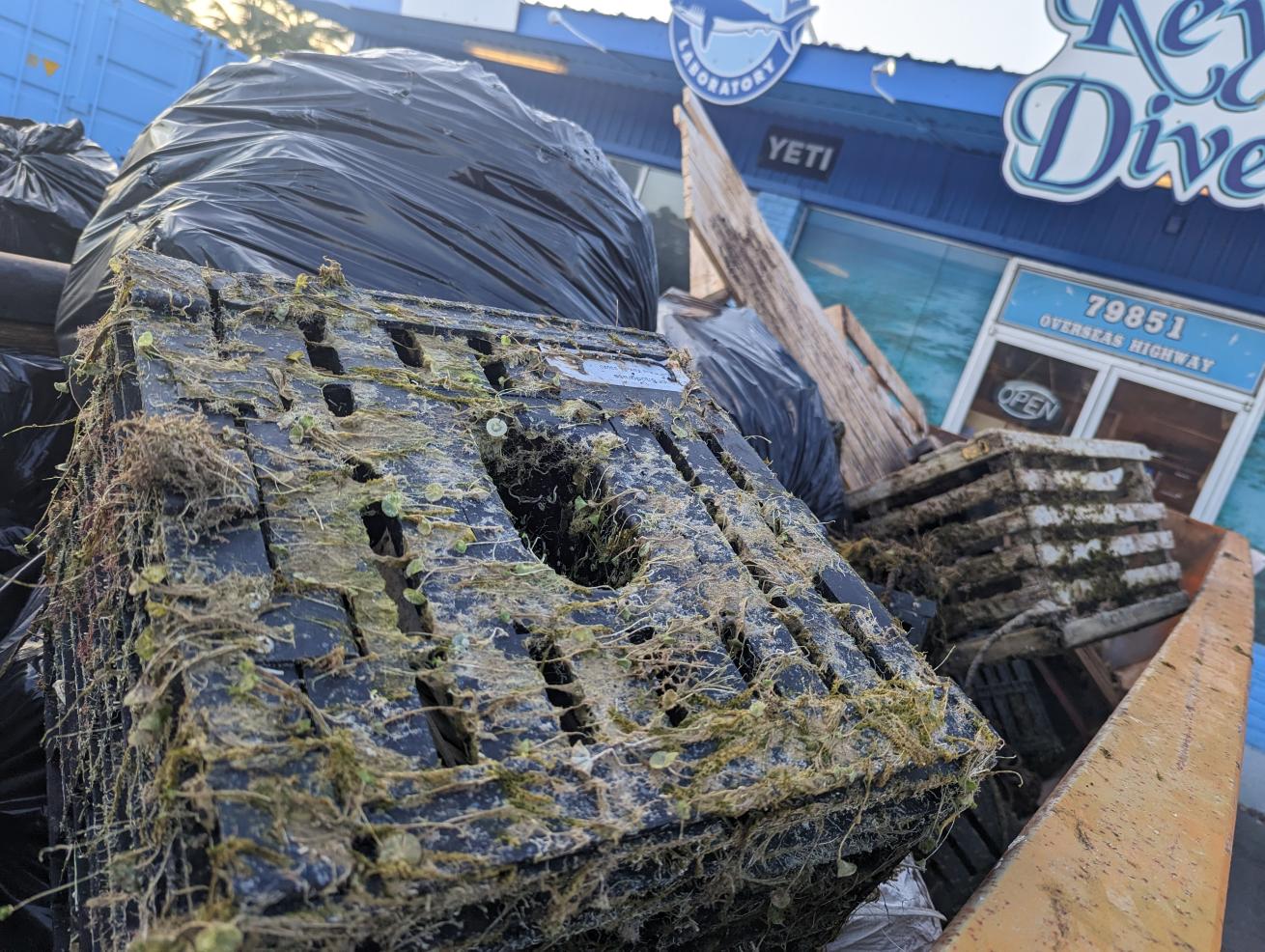
Tiffany Duong/Ocean RebelsMarine debris in the Florida Keys is primarily made up of derelict traps and line that have come loose during storms or been lost at sea.
In total, 190 trash picker-uppers – including both divers and non-divers competing in three divisions (land/shore, private boats and dive shops) – collected 12,758.67 lbs of coastal trash over 1.5 days! This included literal tons of plastic pollution, ghost fishing gear and marine debris removed from the mangroves, coastlines and waterways of the Florida Keys.
For context, Key Dives is the leading dive shop in terms of marine debris removal in the Florida Keys. It took them over 1.5 years to reach 10,000 lbs of marine debris removed through Dives Against Debris. To have more impact than that in just 1.5 days is astounding; involving nearly 200 people in the effort was even more important.
Together, We Rise
So, no matter whether you’re a diver or not, there are ways to help in the fight against marine trash. Conscious choices like reusing and recycling help “upstream,” and cleanup efforts and Dives Against Debris help downstream. Working together with each other, within our communities and at a global level, we can clean our seas.


